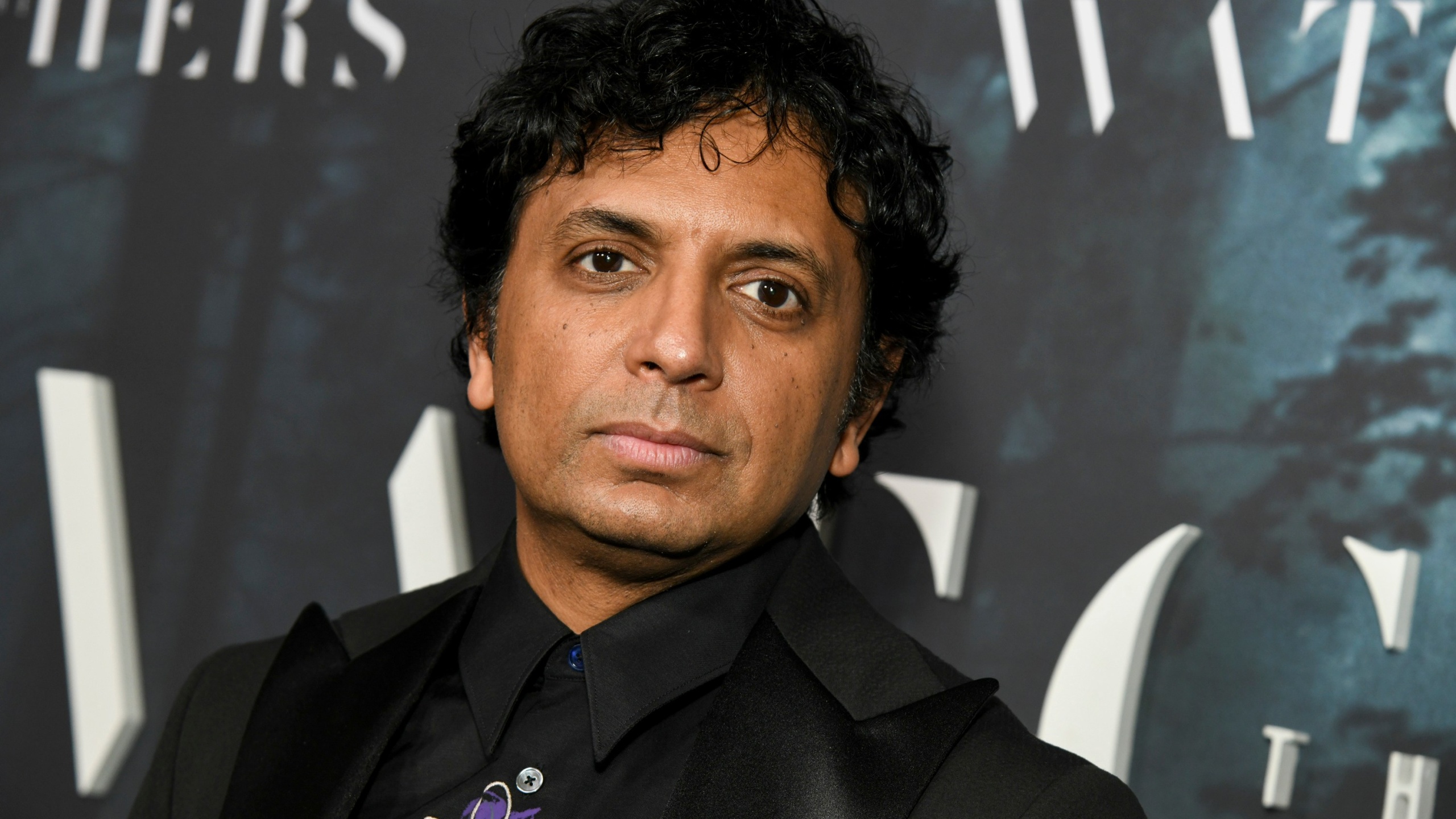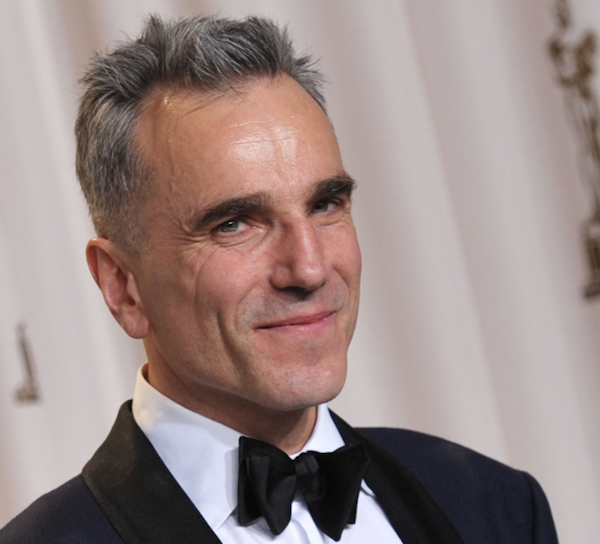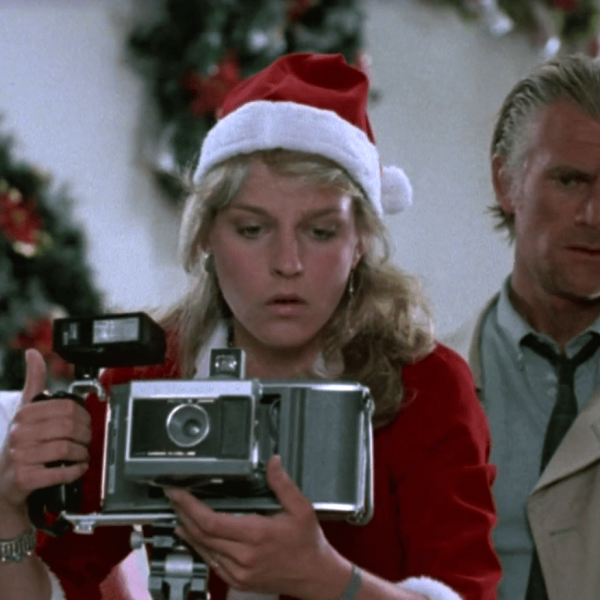Rarely does a filmmaker require so little introduction as M. Night Shyamalan, whose name essentially became noun, adjective, and verb the moment “The Sixth Sense” landed with shockwaves a quarter-century ago. Though it’s standard operating procedure to note the strange arc of his career — delirious successes, mid-career work treated by the general public as follies that nevertheless earned cult-like acclaim, and a years-long “comeback” finally turned to revived mainstream acceptance — that trajectory’s only emboldened with “Trap,” which, more than a gangbusters thriller, is perhaps his purest piece of entertainment in decades.
Even more than “Old” or “Knock at the Cabin,” “Trap” finds Shyamalan in full-tilt thriller mode—certainly to the greatest extent since 2017’s “Split” at the least, this time (wisely) free from much of that film’s psychology or pathos. Burdens of expectation will never escape the writer-director, but even by this metric “Trap” offers the distinct satisfaction of watching a talent excel — a filmmaker who so understands fear does well to tell a serial-killer story stuck almost exclusively with the killer’s POV — and perhaps all the more in offering a return of sorts for Josh Hartnett, an actor whose stiff onscreen presence is engineered toward sociopathy, whose genial good looks play as a hard mask.
IndieWire sat down with Shyamalan in person in New York City to talk “Trap” and his career, launching straight into a discussion of both new and old.
This interview has been condensed and edited for clarity and length.
Indiewire: Your films are built upon and littered with quotidian tragedy, the worst things that not only could happen to a person but do every day: murders, home invasions, train crashes, abusive childhoods, deceased loved ones. Where does the interest in everyday tragedies come from? What attracts you to them as storytelling anchors?
M. Night Shyamalan: I think trying to get a handle on the darker things that we experience in life—trying to find meaning in them. Let’s say “Trap” is about the real-life monsters in a society that exists. There’s people, maybe, on a continuum from empathy to the character that Josh plays, in Cooper, but they are there: people without empathy. There’s a thing I read that said 4% of the United States could qualify as sociopaths—they just don’t have empathy—and it’s so frightening because we sense that. Our alarm signals go off a tiny bit. “Huh, that’s odd.” I’m just using them as one example of the kind of quotidian tragedies.
A part of it is: There are car accidents; there are random crimes; there are people with no empathy. Trying to make sense of it and still keep my the-world-is-a-benevolent-place philosophy intact. Is there any light in darkness, let’s say, in this movie? In those places — those abysses, those black holes — of empathy. Is there any light there?

The film has levity for being so entertaining. And quite funny. Something I wasn’t prepared for is that you often do this Jonathan Demme-esque direct address to the camera. You know what I mean?
Yeah, yeah. Absolutely.
It feels like you do that when you want to up the performance register a bit. The actors become a little sillier, goofier, more menacing.
Mmm-hmm.
It reminded me of the performance style in “The Happening.” What was the thinking of locking into those tonal registers at these moments?
So let’s take an example in the movie, like the premise moment where the t-shirt vendor tells Josh’s character what’s going on, and Josh comes around to have a very intimate conversation with him. “Hey, buddy. What’s happening?” But it’s essentially from Josh’s point-of-view, and he’s very intensely connected to the person he’s talking to — abnormally connected. It’s kind of the tightrope walk of what he’s doing there, because he’s supposed to be joking. “Hey, I got something really funny to tell you. You’re my guy, so I’ll tell you. This guy, The Butcher, is going to be caught today.” He’s finding out this man is talking about him, and it’s just hyper-intense. So everything’s heightened. It’s not realistic. The comedy is heightened. The intensity is heightened. Too much Tabasco sauce in that moment.
That’s why it’s not appropriate for normal moments. Nobody feels that intensely. But a character like Cooper can get like that with people, so I did that a handful of times in the movie: He’s unnaturally drilling down on you and intense. And when I use it in other moments in movies, it’s where a normal character is coming to a really intense moment of realization or they’re on a tightrope walk a little bit — they’re not natural — so if I take your eyeline right off of center, it feels more natural; it feels more comforting.
You’ve worked with some of the world’s greatest cinematographers, with three different ones over the last three films. Are you having the same getting-to-know-you conversations with each DP? How are you conveying hopes and intentions?
I think the binding thing is the analysis that goes on. When I’m scheduling the next movie, this is how I schedule it: writing time; storyboard time; and then pre-production. So in that storyboarding time, that’s where the philosophies and the thesis — what’s important, why; is there a cinematic language — that’s where the DP and I come to get in alignment. So, for example, in “Trap” with Sayombhu [Mukdeeprom] — originally, before he came on, I was thinking, “You know, Let’s do this in 4:3.” So I started drawing it in 4:3 with my storyboarding artist. Then Sayo came on, and we started talking about it, and he made a case against it. He had talked to me about his experiences with Luca [Guadagnino]. They thought about it a couple times themselves, about whether to use 4:3. And as we just started to think about it more, it didn’t feel right. So we went back and re-storyboarded everything back at 1:85.

That would be an example of how we get in sync with each other. Then, I would say something like, “In the concert, there’ll be lighting and so you’re going to have to use the lighting from the stage and work hand-in-hand with the concert lighting to design that, because that’s what’s going to be going on on their faces.” So it’s things like that. Or, “When they go into the bathroom it’s going to have this feeling.” And, “When they get in the car it’s going to feel like this.” Giving colors. And each DP’s different. Some will bring photographs and I’ll say, “That. That. That.” Let’s say with Jarin [Blaschke] on “Knock at the Cabin,” there’ll be black-and-white polls of light—or whatever it is. Each one’s a different language. Generally I go to naturalists who are slightly heightened. Tak Fujimoto, Mike Gioulakis, Sayo are kind of naturalists, and so I put them in a similar category.
There’s a discomfiting quality to certain images, like the way Josh Hartnett’s shoulders feel so tightly packed in the frame. The ambition to shoot in 4:3 makes sense. Were there things that survived from this earlier idea?
Probably. The reason I was thinking 4:3 was I thought you would get the verticals of the concert. So you would get the second row of the stadium — the upper tier of the stadium. When he’s talking you would see, “Oh, my God, there’s 10,000 people up there.” Because you’re in such a large place. But I ended up finding the limitations of the sides created a little bit of a suffocation in a… too-much way. Doing too much work for me saying “you feel claustrophobic.” That was an interesting realization, because when he’s having a realization but you’re seeing the girls next to him screaming: That’s nice. It’s him in juxtaposition to his environment that makes it fascinating.
You’ve talked about how important 35mm is for you. Of course, you’ve also shot films digitally. “After Earth” was one of the first features shot in 4K, for instance.Looking back at the stretch of movies shot digitally, do you have any regrets that they couldn’t be 35mm?
You know, those bigger CGI movies, the thesis is: You’re going to do so much work in CGI that you might as well start from a digital base. That was the thesis of it. And then after that era, when I started to fund my own movies, it was literally a financial thing. [Laughs] Well, first of all: “Visit” couldn’t be because that supposedly is from the kids and their video cameras. So just the conceit of the movie, that doesn’t work. But then the movie after that, “Split,” I would have if I could have afforded it in the budget but it’s a significant amount more. So until the budgets got a little bit more so I could put, “Okay, we’re going to shoot on film.”
That’s kind of a mandatory thing because it’s precarious. You only get the dailies… because there’s not many film labs left in the world, or the United States. You’re making hard decisions, which is: you’re not seeing the footage for three days. Because it ships all the way to Los Angeles; then it comes back. And it’s dangerous, right? Because it’s a negative; it’s all these things. And there’s costs involved. Whereas with digital: boom, you have it right away. And so much less expensive. But I do it for… it just makes a difference. I remember, even with Apple, I made a presentation to shoot “Servant” on film.

I wonder if shooting digitally started to account for your films being faster-paced. But “Trap” is also rather speedy and shot on film.
Yeah, I don’t know. You know, if you’re being organic, it should be coming from the material. So “Trap” has the most shots of any of my movies. And I don’t know why. It just started coming out that way. Me and the storyboardist were like, “Holy moly. That’s a lot of shots we just did.” But that’s what it wanted. I think partly because it’s a buoyant environment full of stimuli; partly because he’s sharp and witty as a character, so he’s kind of ch-ch-ch-ch in his thinking. He’s not methodical and quiet. He’s playful. So there’s a buoyancy to the way I shot it and a buoyancy to the movie. It’s fascinating that “Trap” has the most shots, you know? It was hard to do because the way I shoot, it was still the same amount of time, practically. You’re jamming a day with stuff. But the stimulus of being at this loud event—it felt right. But the very next one we might feel like, “Hey, the suspense is better-had with not cutting and the movement of the camera. Or at least an arrhythmic version of both.”
On the subject of levity: you have an attraction to very concise titles. “Split,” “Glass,” “Old,” “Trap” all in this spree; “Knock at the Cabin,” the longest, is taken from a book’s title.
It’s an interesting thing. I was telling Warner Bros. that my experience, when we release my movies, you’re taking a common word and then you have to create another meaning from it. So it’s both easy but then also difficult to create a new association. The word “signs” — what does that mean to anybody? But you need that crop circle. Keep on saying it. I remember when Disney was releasing that, they kept saying, “I think we might have a title issue. It’s just not sticking with them. They’re not remembering it.” It’s like trying to own a common word and redefining it. But in its blandness is kind of like, “Hey, we’re walking very minimalist.” Somehow it speaks to me that way.
What I was thinking about the other day, strangely, was “Despicable Me” as a title. Which I found socool. I was driving the other day, and I was just thinking, “That is such a cool title. Despicable. There’s no way a studio said okay to that, to a kid’s movie. Do kids even know what that word… what? Despicable Me. It’s some haiku.” Maybe one day I will come up with something that’s like that — that’s so unique. It’s connecting.
But I like the transformation of things, so it might just be that kind of minimalist… you come to my house, it’s all light wood. There’s no stain on anything. It’s very kind of clean. I get peace from it being clean. My closet in my house — everything’s precise. You’d think I was… a serial killer. [Laughs] The shoes. Everything’s perfect. The ties are laid out. It gives me peace. Maybe it’s something to do with that.

Which of your own scripts are you proudest of as a screenplay, as an example of the script form?
Wow, that’s a great question. Jeez. [Pause] You know, I do feel like “Signs” was a really kind of playful… it was almost vignettes that grew into this cacophony. Now, it seems more common — the thought of an alien invasion from the point of view of one family — but at the time, it was kind of interesting how it kind of played out and the bigger picture was coming to the piece. Before “Trap,” that was the fastest script.
I love your Twitter bio listing your Mount Rushmore: Kubrick, Kurosawa, Hitchcock, and Ray. Do you have any further recommendations in the realm of Indian cinema for people who might not know it well?
I mean, the “Pather Panchali” series is… unbelievable. Like in… I guess I was going to say Cassavetes, but where you get naturalism so strong that it’s like CGI. You’re getting a cocaine version of reality. It feels so, “How did they do this?” You can, like, smell it, it feels so real. He did that in that piece and it’s something I love. Again, I think that’s what I loved about doing the concert in “Trap”: it’s real. Even though it’s… it’s a pop concert, but there were so many things I couldn’t expect to have happened that did happen. The way they held their cameras up. The way they were bouncing. The way they blocked the person and then it clears. Or the way the light bounced off of everyone. That’s what’s the beauty—rather than someone in a cubicle with a CGI pen trying to make something.
Have you seen any films by Mani Kaul?
[Shakes Head] Mmm-mmm.
I’m showing his film “Nazar” at BAM next month.
Can you say his name again? Kaul.
Yeah. Mani Kaul.Just one of the greatest filmmakers to ever live.
Wow. Definitely.
I know you’re a busy guy, but…
No, no. I’m on it. Beautiful. That’s exciting.
Well, if I could recommend a movie to M. Night Shyamalan — a good day.
I’m on it. When my daughter, she was at NYU film school, would call and say, “Have you seen this movie?” And I’m like, “No!” And then I went and watched it and it would change everything. “A Man Escaped,” that one. She recommended that. I hadn’t seen that and I was like, “Oh, my God.”
One of the greatest ever, right?
Ever. And that was 4:3, so it’s like…
Maybe “Trap” is your “Man Escaped.”
[Laughs] Probably, by the way. That’s so funny you say that. Probably. Because I just thought of that randomly, but I remembered how profoundly, when Ishana told me to watch that, it affected me.
It’s going to drive people crazy when they learn this is your “Man Escaped.”
[Laughs]
“Trap” opens in theaters from Warner Bros. Friday, August 2.


